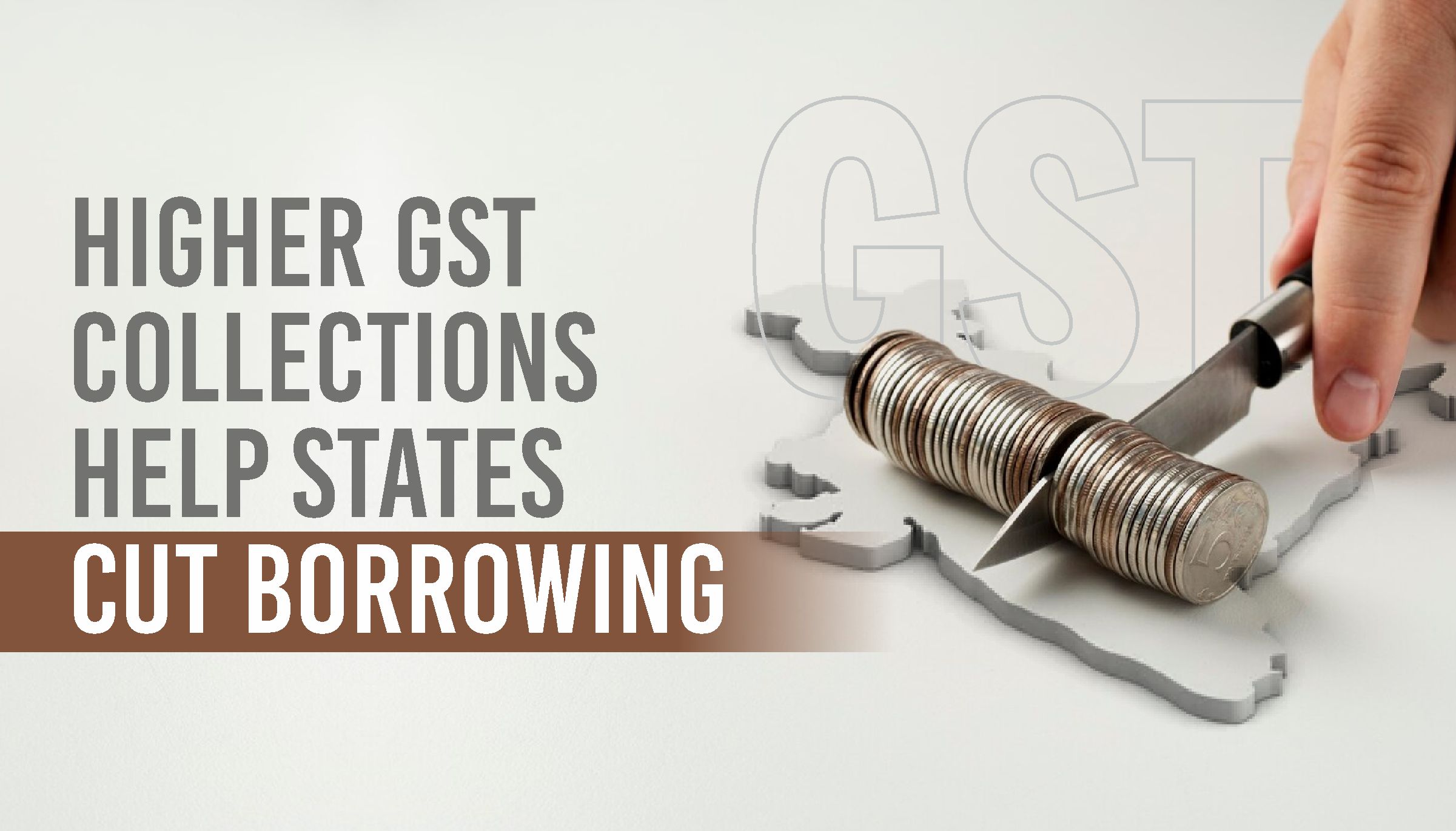Higher GST Collections Help States Cut Borrowing

In a surprising shift, state governments have significantly reduced their borrowing in the second half of the financial year. This decline is attributed to robust Goods and Services Tax (GST) collections, increased fiscal growth, and substantial cash reserves. As a result, the supply of state government bonds has reduced, leading to narrower spreads between government securities (G-sec) and state government securities (SGS).
The Impact on Bond Markets
The reduced borrowing by states has caused the yield spread between short-term SGS and G-sec to narrow to 20 basis points (bps), down from the usual 30–35 bps. Similarly, the spread for 10-year bonds dropped to 23 bps from 37 bps. This marks a notable shift in market dynamics, as states traditionally borrow more in the latter half of the year, often exceeding indicative borrowing calendars.
Borrowing Trends in Recent Months
Between April and September, states raised ₹3.7 lakh crore through bonds. However, borrowing in October stood at ₹84,842 crore, falling short of the ₹1,12,037 crore projected in the indicative calendar. Similarly, states borrowed only ₹14,867 crore in the first two weeks of November, against the expected ₹33,680 crore.
This is in stark contrast to previous years, where borrowings often exceeded projections. For instance, in October 2023, states borrowed ₹92,283 crore, significantly higher than the indicative ₹74,842 crore, showcasing a more aggressive borrowing stance.
Understanding Borrowing and State Cash Flow
The Role of Borrowing in State Finances
States rely on borrowing to finance large-scale infrastructure projects, developmental programs, and address fiscal deficits. These borrowings, typically raised through state development loans (SDLs), are an essential component of state budgets.
The Dynamics of State Cash Flow
A state’s cash flow is influenced by its revenue sources, such as taxes, grants, and loans. When tax collections are robust, states accumulate higher cash reserves, reducing the immediate need to borrow. Strong GST collections have played a pivotal role in boosting state revenues, enabling them to manage expenditures without resorting to heavy borrowing.
Reasons Behind Reduced Borrowing
-
Robust GST Collections
Consistent growth in GST revenues over recent months has significantly boosted state coffers. Market participants noted that states are sitting on substantial cash balances, diminishing the urgency to borrow.
-
Election Spending Restrictions
Assembly elections in some states brought the model code of conduct into effect, curbing discretionary spending and reducing borrowing needs.
-
Favourable Demand-Supply Dynamics
The lower supply of state bonds has spurred aggressive bidding in the market. Foreign investors, drawn by the inclusion of G-sec in global indices, have increased demand for these securities. This heightened competition has trickled down to state government bonds, making them attractive to domestic investors.
-
Lucrative Options for Investors
The higher premium offered by SGS compared to G-sec continues to attract insurance companies, pension funds, and banks. Additionally, states issuing long-term securities have drawn interest from these institutional investors.
Future Outlook for State Borrowings
While borrowing has slowed in the current quarter, market participants expect it to pick up in February and March when central government bond issuances pause. States will likely re-enter the market to meet their fiscal year-end funding requirements.
The current scenario reflects a positive fiscal environment, buoyed by strong GST collections and disciplined spending. However, the dynamics of borrowing and cash flow remain critical to watch as states balance their fiscal priorities with market conditions.
